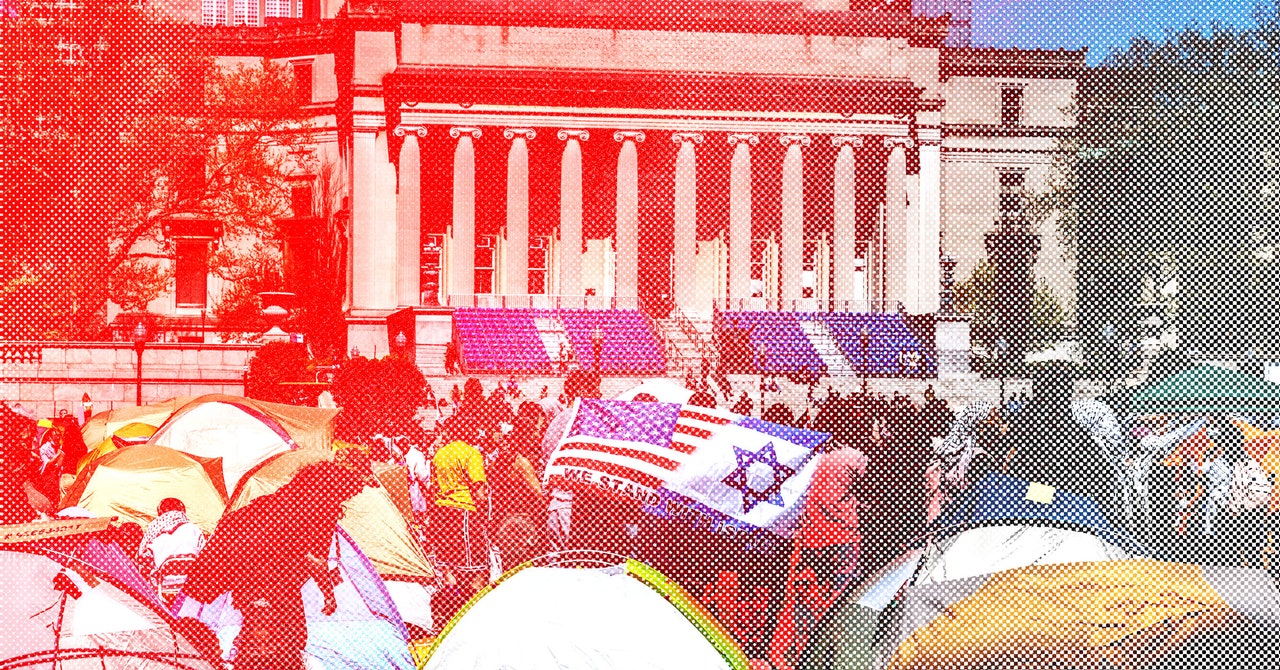The WIRED Politics Lab: Student Journalism Covering the Gaza Protests and Bringing Out the Proton in the U.S.
Disinformation doesn’t exist in a vacuum. When there is a need to get authoritative information out quicker than trusted helpers, it’s where it’s at. This couldn’t have been more obvious last week as police departments raided college campuses and pro-Palestinian protests across the country.
WIRED Politics Lab is about how tech is changing politics. I’m Leah Feiger, the senior politics editor at WIRED. Since the October 7th massacre in Israel, a lot has happened. There’s a devastating war in Gaza, heightened Islamophobia and anti-Semitism in the U.S. and protests have erupted on college campuses across the country over the last few weeks. These protests have become the largest student movement in the US in decades. And of course, disinformation and conspiracies on these issues have been everywhere. So today on the show, we’re going to talk about how student journalists are covering the protests and dealing with this disinformation, and how foreign actors are exploiting the dissent. Two reporters from WIRED are with me today. They talked to student journalism students from around the country. How is it going?
The way in which people viewed the protest was completely different than the way we observed it on campus. It was not as rowdy as had been depicted. The Columbia News Service runs the graduate School of journalism, where Ventura is a student. “The coverage was closed off to the press, and they only had a few moments inside campus, so it was easy for [media] to make mistakes … It was ripe for disinformation in that sense.”
“None of us saw all of this coming, in terms of the national attention,” Esha Karam, managing editor at the Columbia Spectator, told us. “It was definitely unprecedented and took us by surprise when things started to pick up.”
The New York Police Department raided the Gaza Solidarity Encampment at Columbia last week, and only about a few journalists were allowed onto the campus. With outside reporters mostly unable to enter campus, the Spectator staffers were essentially on their own and forced to contend with the conspiracies swirling around the protests and resulting crackdown.
WIRED.com Student Journalists: Bringing Up Disinformation About Students’ Demonstration at the CIO and Higher Education Institutions
Leah Feiger is @LeahFeiger. David Gilbert is @DaithaiGilbert. Makena Kelly is a person. Vittoria Elliot is @telliotter. Write to us at [email protected]. Be sure to subscribe to the WIRED Politics Lab newsletter here.
The audio player on this page will always have the audio for this week’s episode, but if you want to get every episode for free, you need to subscribe.
If you’re on an iPhone or iPad, open the app called Podcasts, or just tap this link. You can also download an app like Overcast or Pocket Casts, and search for WIRED Politics Lab. We are also on Spotify.
Leah Feiger: Let’s talk about why you both wanted to talk to student journalists for this episode and your upcoming story on WIRED.com about disinformation in these protests. What specifically about them and their situations made them the perfect people to learn from and understand what’s been happening on the ground here?
Makena Kelly: Sure. The student journalists have covered the campus every day since last semester, so I think the big thing is that. For many of them in the past.
Makena Kelly is a person. They become an important resource because they know the people, know the administrators and understand how the system works. Like what we have seen with all of these.
